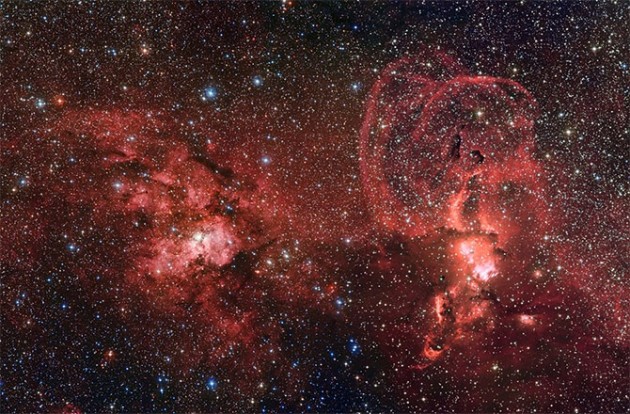
Although it was recently reported that a mysterious class of astronomical phenomena — fast radio bursts — was now understood, that analysis (and those conclusions) turned out to be faulty. But data from a new study, just released today, shows that some of these fast radio bursts repeat, and that not only is there hope for understanding them after all, but the touted solution of the earlier study falls apart in light of this new data. Here’s the story of what they are, plus what we’ve learned.
Strange signals
In 2007, the Parkes Radio Telescope in Australia, one of the largest steerable radio telescopes in the world, found a signal unlike any other: a tremendously energetic, unresolved signal lasting for just thousandths of a second. When you pointed your other telescopes to look for it, there was nothing: no optical signal, no follow-up signal, no gamma rays or infrared radiation, nothing. In the nine years since that observation, other giant radio telescopes, like Arecibo, have serendipitously seen them too, but for all of those years, there was no hint of what they might be, and whether they’d have an origin in our atmosphere, from stars (or even aliens) in our Milky Way, or from the very, very distant Universe.
Solved Mystery?
It was recently claimed that this mystery was solved, by a team that claimed to have identified a galaxy where one of these radio bursts originated. By observing what was inferred to be the same signal — a fast radio burst (seen at Parkes) followed by a faint radio signature a few hours later with a different instrument (the Square Kilometer Array) — they were able to triangulate a position for its origin on the sky, coinciding with a giant elliptical galaxy some six billion light years away. Since giant ellipticals are predominantly filled with old, red stars and stellar remnants like neutron stars and black holes, it was assumed that an event this fast, violent and energetic would likely come from a merger of two of these collapsed objects, and if so, we could learn a whole slew of information. In particular, these signals could be used to measure the amount of ionized normal matter in the intergalactic medium, which could account for a fraction of the (baryonic) dark matter that’s been theorized but never yet observed in our Universe.
Alien signals ?
however, Paul Scholz, a graduate student at McGill University, was sifting through radio data from Arecibo observatory, and noticed something funny.“I knew immediately that the discovery would be extremely important in the study of FRBs,” Scholz related. There were ten signals in the data consistent with fast radio bursts, but this time they were different: there were repeats, rather than one-time-only events! The fact that there are multiple events and that the data is so good — even though they’re observed with the same instrument — allow for their dispersion to be measured. Although we can’t yet determine their positions fairly well, that dispersion allows us to conclude that they are, in fact, outside the Milky Way. The first author on the paper, Laura Spitler, adds the following, “Not only did these bursts repeat, but their brightness and spectra also differ from those of other FRBs.”













